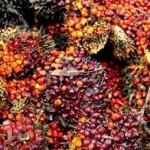 Corvallis, Oregon – Researchers have taken a new look at an old, but seldom-used technique developed by the petroleum industry to recover oil, and learned more about why it works, how it could be improved, and how it might be able to make a comeback not only in oil recovery but also environmental cleanup.
Corvallis, Oregon – Researchers have taken a new look at an old, but seldom-used technique developed by the petroleum industry to recover oil, and learned more about why it works, how it could be improved, and how it might be able to make a comeback not only in oil recovery but also environmental cleanup.
The technology, called “microbial enhanced oil recovery”, was first developed decades ago, but oil drillers largely lost interest in it due to its cost, inconsistent results and a poor understanding of what was actually happening underground.
The new findings by engineers at Oregon State University published in the Journal of Petroleum Science and Engineering could help change that. This may allow the oil industry not only to produce more oil from their existing wells, but also find applications in cleaning up petroleum spills and contaminants.
“This approach of using microbes to increase oil recovery was used somewhat in the 1980s when oil prices were very high, but the field results weren’t very consistent and it was expensive,” said Dorthe Wildenschild, an Associate Professor in the OSU School of Chemical, Biological and Environmental Engineering. “It’s seldom used now as a result.”
Oil drilling has always been difficult – it’s not as simple as drilling a hole and watching the petroleum gush out of the ground. That may happen for a while, but as a secondary step, water is often injected into the well to help flush out more oil. Such production techniques generally recover only one-third to one-half of the oil originally present in a reservoir.
A third approach sometimes used after water injection is to inject microbes into the well and “feed” them with sugars such as molasses to encourage their growth. This can clog some pores and in others has a “surfactant” effect, loosening the oil from the surface it clings to, much as a dishwasher detergent loosens grease from a pan.
“By clogging up some pores and helping oil move more easily through others, these approaches can in theory be used with water flushing to help recover quite a bit more oil,” Wildenschild said.
The surfactant can be man-made, or microbes can be used to produce it at a lower cost. However, getting a particular culture of microbes to produce the biosurfactant under harsh field conditions is tricky.
“It’s complicated, you have to use just the right microbes, and feed them just the right foods, to accomplish what you want to do,” Wildenschild said.
In OSU laboratory experiments, Ryan Armstrong, a recent doctoral graduate at OSU, found that the clogging mechanism is the simplest and most effective approach to use, although combining it with the biosurfactant technology achieved optimal oil recovery.
A better fundamental understanding of this process – along with higher oil prices that better reward efforts to recover more oil – could lead to renewed interest in the technology on a commercial basis, the OSU researchers said, and make oil recovery more productive. As an extra benefit, the concepts might also work well to help remove or clean up underground contaminants, they said.
This work was supported by the Petroleum Research Fund of the American Chemical Society.
Details of the Research:
Source: Oregon State University (OSU).














